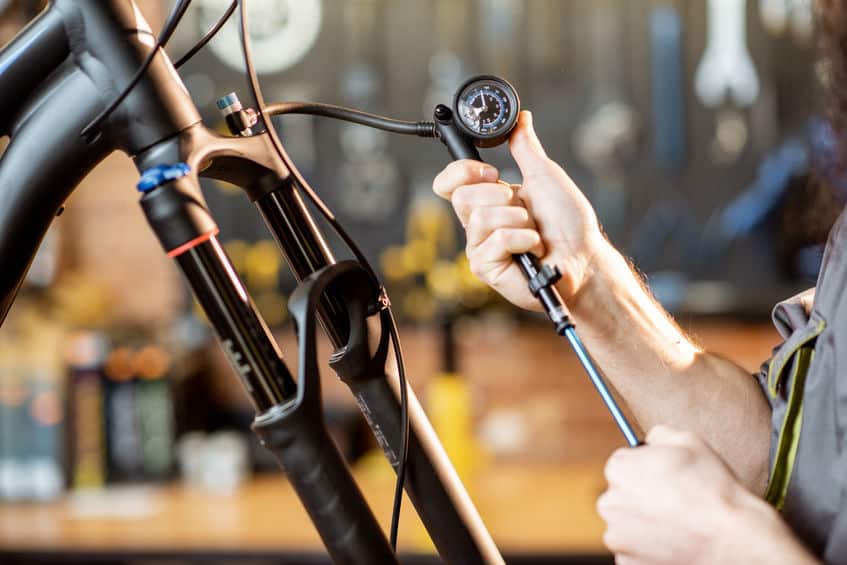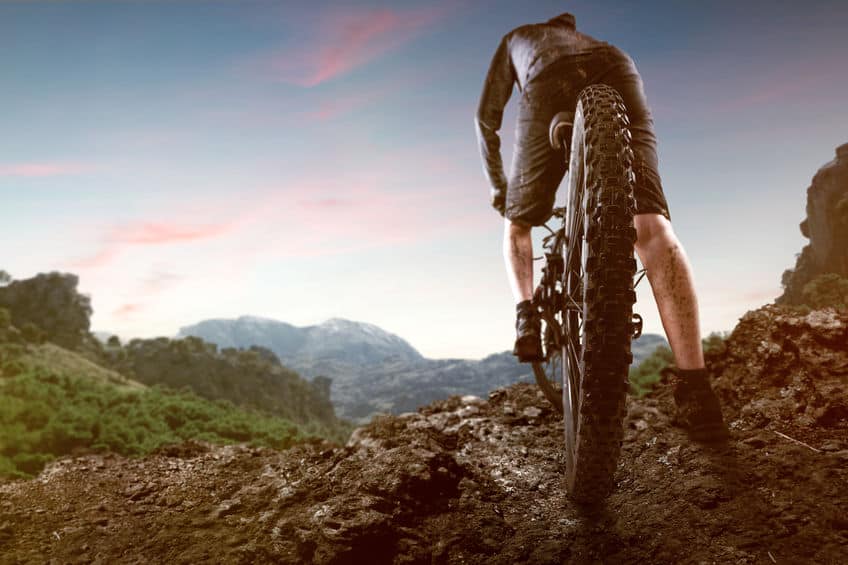Dual suspension mountain bikes, also referred to as full suspension mountain bikes, are mountain bikes that have a suspension setup for both the front and the back wheels as opposed to a hardtail mountain bike which only has a suspension fork for its front wheel.
A mountain bike with a dual suspension can be quite versatile and can be used in almost any discipline of mountain biking. These bikes tend to do a great job when you are riding on particularly bumpy cross country trails with your bike. They can also cut down on some of the jarring that you can feel if you are doing any of the technical features on these trails.
While having a mountain bike that has dual suspensions can be useful, whether it is your cup of tea or not is more of a matter of person preference than it is a question that has a straight yes or no answer. The fact is that some people think they are the best thing out there in the world of mountain bikes while others prefer not to ride this kind of bike at all.
This being the case, knowing a bit more about full suspension mountain bikes and the different reasons why experienced mountain bikers like or dislike them can be a huge help when it comes to trying to decide if a dual suspension mountain bike would be good for you. In this article I don’t plan on getting into the details of the nitty gritty on how the suspensions word, I will just try to give you the highlights and general facts that you should know about this kind of mountain bike to help you make your decision on if it is the right one for you.
Reasons Why Having A Mountain Bike With Dual Suspensions Is A Good Idea
As it absorbs the bumps in the trail, your rear suspension will thereby make your ride much smoother as you will feel less of these bumps. Even doing things like high jumps will not jar you as much when you land as they otherwise would if you did not have this feature.

Another advantage to your suspension absorbing the bumps is that it allows your wheels to have better contact with the ground, thereby giving them better grip. This will in turn give you much better control when you need to make any turns in rugged areas of the trail and will also give you better traction and allow you to go faster over these areas.
Having dual suspensions will therefore mean that you can be faster on bumpier trails as well as getting through them with as little discomfort as possible. Bouncing around on a rough part of a cross country trail can also be something that tends to take the energy out of almost any mountain biker, so getting through these areas quickly means that you will expend even less of your energy in getting to the other side of these rough patches.
This suspension on the rear wheel will also make it more comfortable for you if you prefer to stay seated when going downhill. This is because your legs will not have to act as shock absorbers in place of the rear suspension like they tend to do when you are riding a hardtail mountain bike down a steep hill.
This all can add up to make it an overall more fun experience to ride a cross country trail on a mountain bike. Kids, or even adults who for whatever reason simply have a limited amount of stamina or endurance, will often appreciate an easier ride. People who are getting on in years just as often find that their bones might thank them for sparing them of any little bit of jarring that it is possible for them to avoid.
Reasons Why Having A Mountain Bike With Dual Suspensions Is A Bad Idea
For starters, the very first disadvantage that you will likely see with a dual suspension bike is that of the price tag. A full suspension mountain bike can cost a lot more money to buy than a hardtail mountain bike, so to get one of these you have to be willing to have the extra money to spare for it.
Mountain bikes that have dual suspension system also tend to weigh a bit more do to the extra weight of the second suspension set up. Any addition in weight on your mountain bike can easily slow you down when you are out on the trail. The longer the trail is, the more you will be likely to notice the addition in weight. However, if you have a full suspension mountain bike with a particularly light frame, it can be about the same weight as a heavier hardtail mountain bike.
The more parts there are in any kind of bike equates to having more to do in terms of maintenance. Suspensions are not nearly as easy to care for as other parts of your mountain bike are and it can take a significantly longer time to care for all of these extra parts when there are two suspensions to care for, clean, and set correctly.
The greater number of parts and the greater the time needed to clean them can also translate into a higher fee at the bike shop when it comes time to get your mountain bike serviced at the end or the beginning of the year, whichever time you prefer to have this done. This also adds another price tag that you have to pay for when it becomes time to replace old parts with new ones since, once again, more parts will cost more money out of your pockets to pay for them.
If you are pedaling on a nice, flat surface then the benefits that you get from having a dual suspension when going over bumpy trails will be turned into a disadvantage. The same added flexibility that handles the bumps in rough patches will eat up your energy when you are going over smoother surfaces. This will eventually wear you out more as well as slowing you down.
This can be a particular problem for you if you are planning on taking part in a race of any kind since you will not want anything that will slow you down the slightest bit if you want to win. This feature of mountain bikes that have dual suspensions is also not something that you want to have if you are planning on doing any trick jumps, technical features on a cross country trail, or anything else like these. The reason why it can be a bad thing to have a full suspension bike for doing these things is that, when you are doing a technical maneuver on a beam for instance, you need to have absolute control and a perfectly balanced bike. If you have a dual suspension bike and try to do a beam, then when you land on the beam to go down it your suspensions will compress and then start to push back into place like they usually do.
When this happens it can really affect your balance. Though it is something that you can work around and even get used to over time, it can make learning this skill much more difficult than it needs to be and it is quite capable of catching you by surprise if you are still learning how to do things like this.
Conclusion
While as you can see there are some obvious reasons why mountain bikers tend to either hate or love this bike, whether you hate or love it is entirely up to your personal preferences. Both full suspension mountain bikes and hardtail mountain bikes are both easy to find in all kinds of styles, sizes, and brands.
While hopefully this article helped you to decide which one is the right one for you, keep in mind that such a decision is perfectly reversible. If you want to you could even decide to have one of both so that you did not have to pick between them at all!

